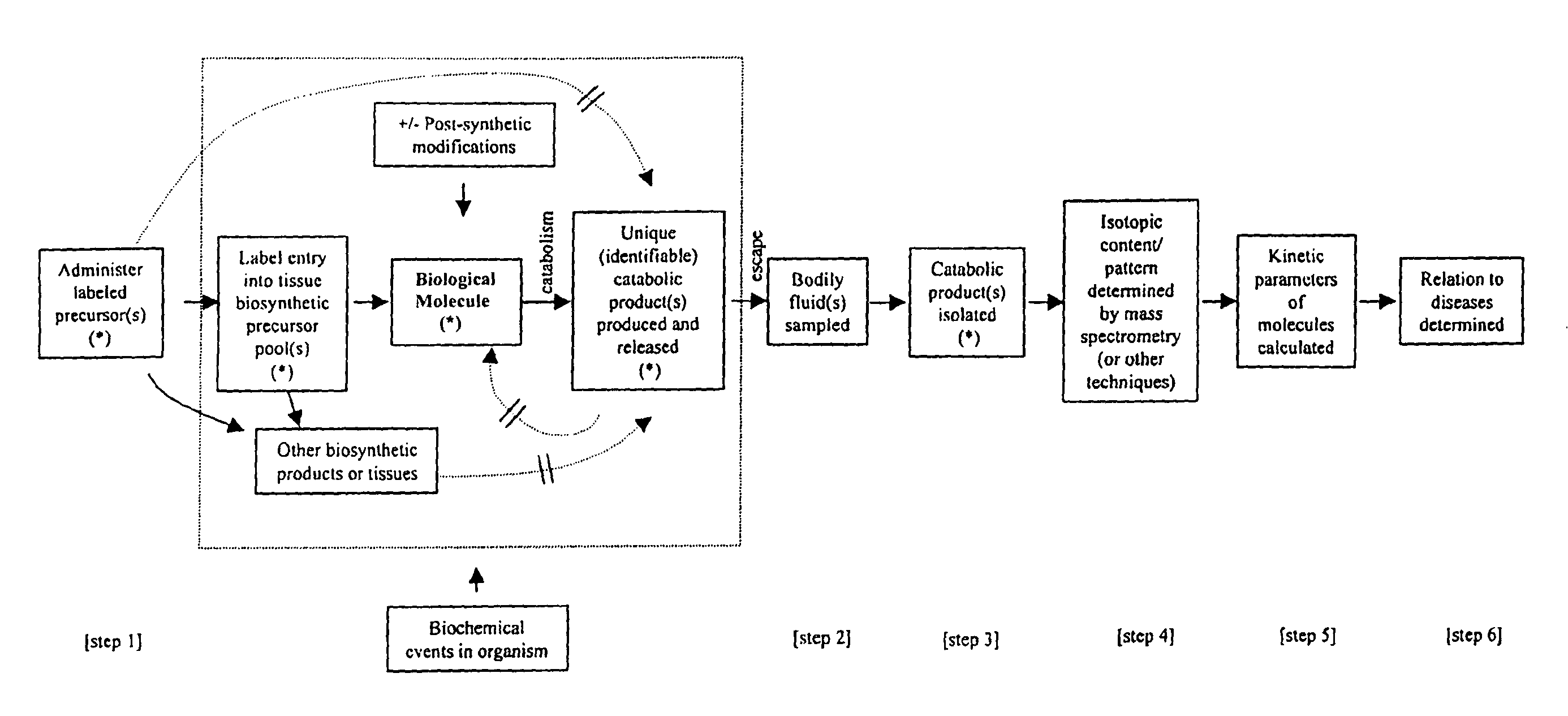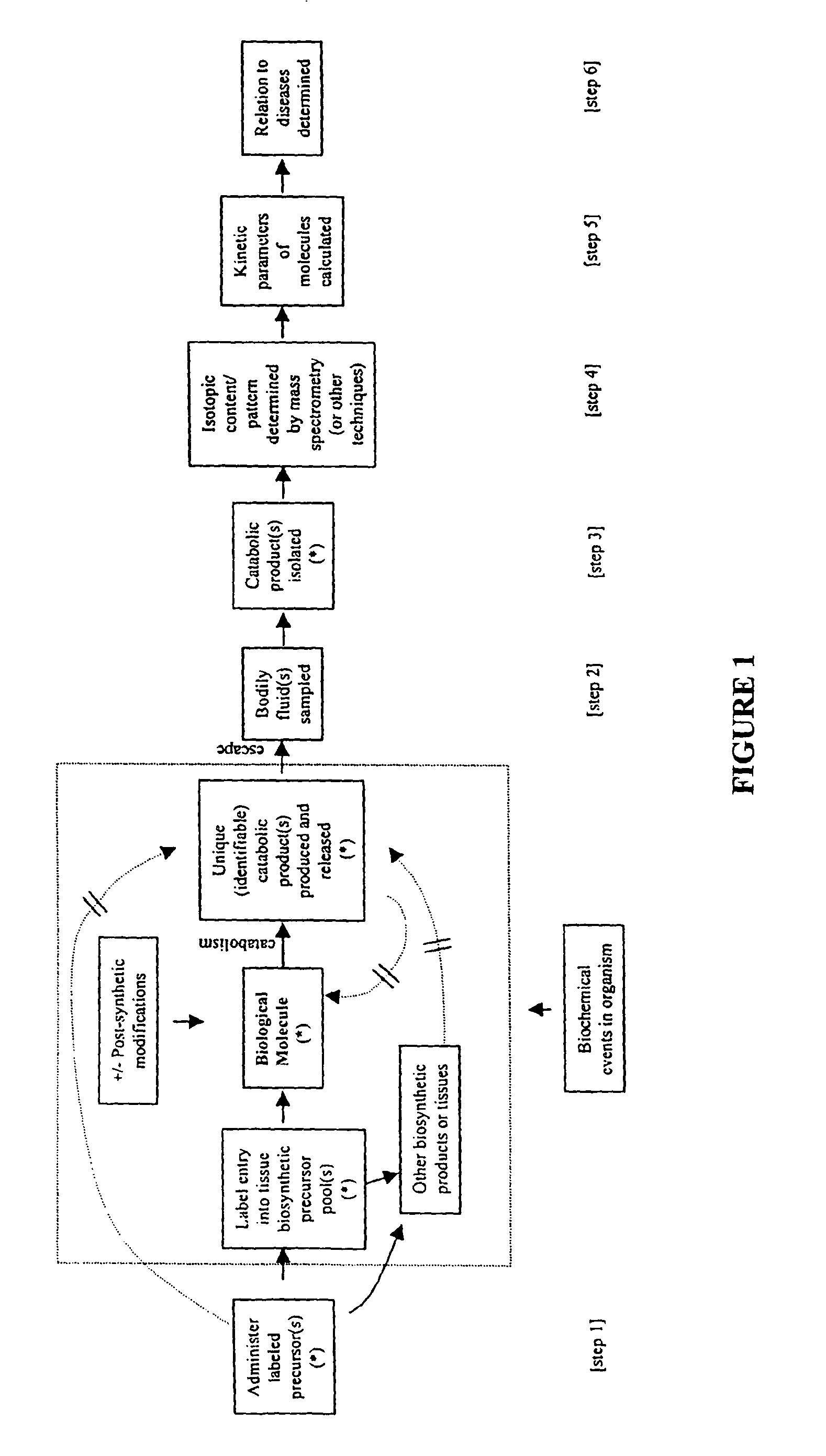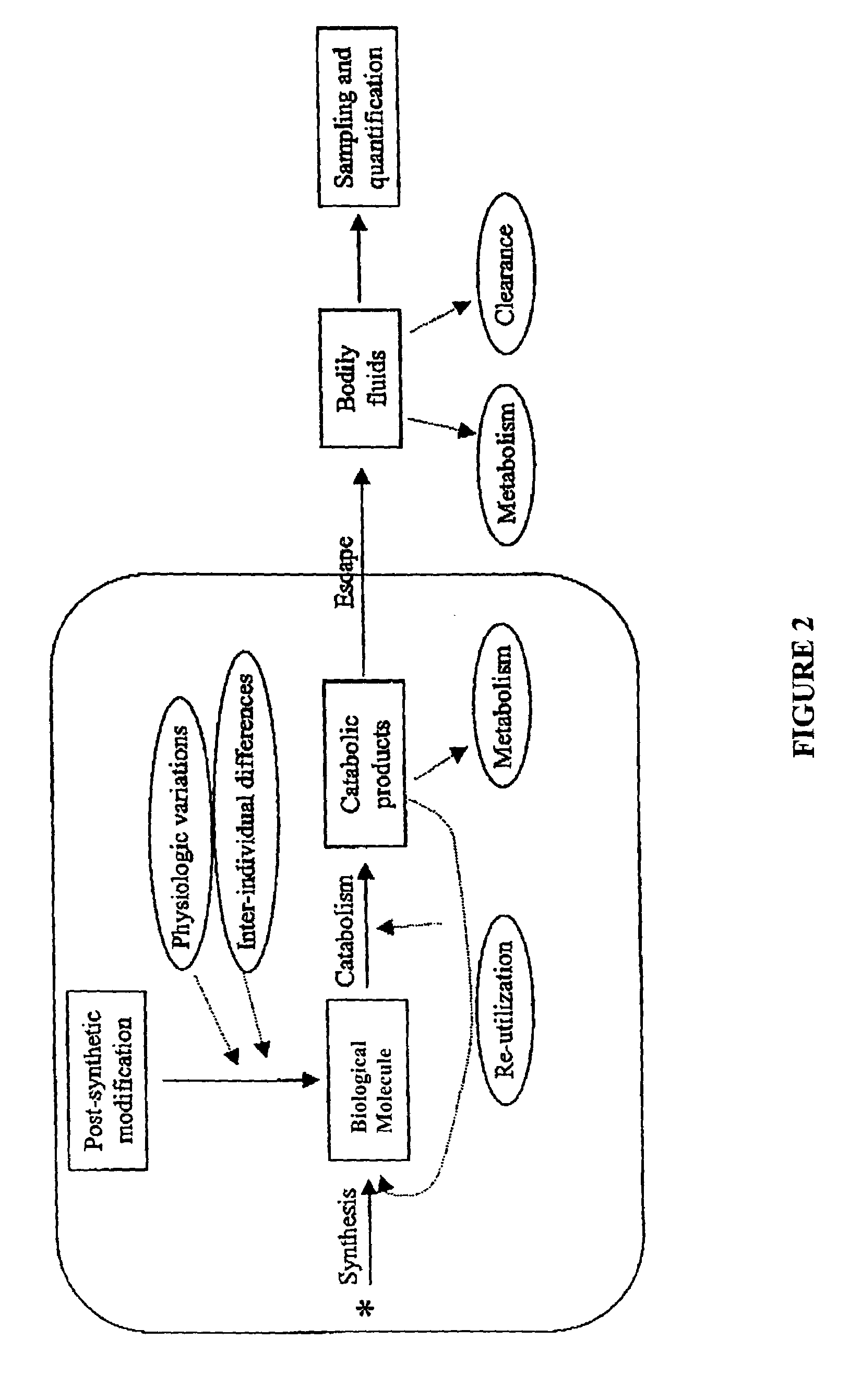Measurement of biosynthesis and breakdown rates of biological molecules that are inaccessible or not easily accessible to direct sampling, non-invasively, by label incorporation into metabolic derivatives and catabolic products
a biosynthesis and breakdown rate technology, applied in the direction of biological material analysis, peptides, material analysis by resonance, etc., can solve the problems of inability to perform direct sampling, discomfort, etc., and achieve the effect of reducing the number of measurements that can be performed, reducing the risk of invasive tissue measurement, and reducing the number of measurements
- Summary
- Abstract
- Description
- Claims
- Application Information
AI Technical Summary
Benefits of technology
Problems solved by technology
Method used
Image
Examples
example 1
Bone Collagen Biosynthesis Using Urinary Pyridinoline / Deoxypyridinoline (Free or Bone-Collagen N-Terminal Peptide-Derived) as the Metabolic Derivative
[0251]An individual with suspected or diagnosed osteoporosis or other disorder of bone collagen biosynthesis or breakdown is given a labeled precursor molecule that is incorporated into newly synthesized collagen in the body. In one such embodiment, this is 13C1-lysine (at a dose of 20 mg / ml, in water, for example) given orally to drink (25 ml) with morning and evening meals for 7 days (total of 14 doses). A urine aliquot (10 ml) is collected from the individual at a defined time point or points (e.g., on the final day of the 13C1-lysine protocol (day 7) and 7 days after completing the 13C1-lysine intake protocol (day 14)). In another embodiment, the individual is given labeled water in similar way to the 13C1-lysine (for example, 50 ml of 70% 2H2O twice a day for 7 days).
[0252]Urinary free or peptide-bound pyridinoline / deoxypyridinoli...
example 2
Tissue Fibrogenesis Using Urinary Pyridinoline / Deoxypyridinoline Derived from Liver, Heart, Lung, or Skin Collagen N-Terminal Peptide as the Metabolic Derivative
[0258]An individual with a suspected or diagnosed fibrogenic disorder (e.g., hepatic fibrosis and / or cirrhosis, pulmonary insterstitial fibrosis (PIF), or progressive cardiac failure) or with problematic skin photoaging (wrinkles) is given a labeled precursor that is incorporated into collagen during biosynthesis in the body. In one such embodiment, this is 2H2O (at a dose of 50 ml, for example) given orally to drink with morning and evening meals for 42 days (6 weeks). A urine aliquot (10 ml) is collected from the individual at a defined time point or points (e.g., on the final day of the 2H2O protocol (day 42).
[0259]Urinary N-terminal collagen-peptides specific for liver, heart, or skin are isolated by, e.g., filtration to separate free HP / DP from collagen-derived peptides; immunoprecipitation or immunoaffinity chromatogra...
example 3
Brain Amyloid Precursor Protein (APP) Biosynthesis Using Amyloid (A)-beta 1-40 and 1-42 Peptides as the Metabolic Derivatives
[0264]An individual concerned about risk for Alzheimer's disease or who has been diagnosed with early Alzheimer's disease is given a labeled precursor that is incorporated into newly synthesized proteins in the body. A 10% solution of 13C1-glycine is given orally (100 mg / ml, in water) every 2 hours for a total of 3 doses (time zero, two and four hours; 30 ml doses, for total of 90 ml). A plasma (2 ml) sample is collected from the individual after a known time (e.g., 6 hours) of 13C1-glycine intake. A urine aliquot (20 ml) is collected from the individual at a defined time point or points (e.g., day 3 after administration of the 13C1-glycine). From the urine aliquot, total amyloid-beta (A-beta) peptides are immunoprecipitated, for example, using a monoclonal anti-A-beta antibody coupled to Sepharose beads (Senetek, Inc.), then eluted from the beads with isoprop...
PUM
| Property | Measurement | Unit |
|---|---|---|
| Time | aaaaa | aaaaa |
| Force | aaaaa | aaaaa |
| Electrical conductance | aaaaa | aaaaa |
Abstract
Description
Claims
Application Information
 Login to View More
Login to View More - R&D
- Intellectual Property
- Life Sciences
- Materials
- Tech Scout
- Unparalleled Data Quality
- Higher Quality Content
- 60% Fewer Hallucinations
Browse by: Latest US Patents, China's latest patents, Technical Efficacy Thesaurus, Application Domain, Technology Topic, Popular Technical Reports.
© 2025 PatSnap. All rights reserved.Legal|Privacy policy|Modern Slavery Act Transparency Statement|Sitemap|About US| Contact US: help@patsnap.com



